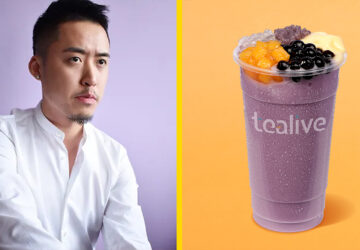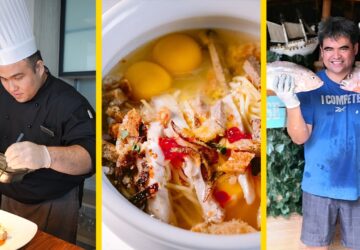


Rooted from a 19th century religious movement that viewed alcohol as a cause of poverty, accidents, criminality, and even corruption, prohibition in the US first started out as a war measure, later becoming a full-force law. The ban of “intoxicating liquor,” defined as anything containing one half of one percent alcohol by volume, was carried out except for alcohol used for medicinal, sacramental, or industrial purposes.
It became a time for bootlegging, the illegal production of alcohol spearheaded by notorious gangsters. The prohibition was the perfect opportunity to make money. Crime rate and corruption rose as more people partied, including politicians and the police themselves, and gangsters became rivals in speakeasies (an establishment where illegal alcohol was sold). With the brewing industry losing steam and organized national crimes remaining in its high-time, the prohibition became subject to repeal until it was finally put to an end.

“One of our strongest backbones to being a speakeasy are the cocktails. [The Prohibition era is] a golden era of cocktails. A lot of cocktails were born during that era because people cannot drink alcohol and so they try masking it or turning it into something else. So that's the time when the cocktail trend was very much workable and evolving,” says bar manager Dicky Hartono.
According to The Back Room’s head bartender, Poch Ancheta, who was also part of The Curator (another Philippine bar that got included in Asia’s Best 50 Bars along with Oto), there isn’t a 100 percent bar in the Philippines that’s fully committed to the concept of speakeasy. At The Back Room, what they try to do is to put some modifications such as subtle music to add to the mood of the bar. But above all else, their guests appreciate the kind of relationship they have with the bartenders who make their drinks as personalized as possible.
They mentioned that there are a lot of repeat customers bringing in new ones, signaling their trust to The Back Room as a place that they’d be proud to tell other people. After their regulars try majority of their menu, the next step is to make something new for them—and that’s when the bartenders, even the staff, started forming their own unique connection among the customers. “The good trust and rapport we build with our customers is something that I look forward to as much as the people look forward to being here,” says Ancheta.
Consistency is very important in coming up with different cocktails and they feel very lucky to have a team that has a strong background in crafting drinks. The good conversation that’s born out of recreating their preferred cocktails became key to establishing a sincere relationship with their regulars.
“People love the idea of making their own spirit. They would be like, ‘Oh, what if I had this?’ and I mean, it's all up to you because you'll be the one drinking it. [The class] is more on the experience of making it and how they would tell their friends that they have their own gin and nobody would believe them up until they see the bottle. They’d say, ‘This is mine. I made it.’ It's wonderful seeing it from them,” Ancheta says.
The classes are a sign that Filipinos are becoming a lot more appreciative of the drinking culture. The Back Room’s classes tend not to be lecture-heavy or purely theoretical—they don’t need to know all the bartending terminologies, it’s about creativity.
The Back Room sees the classes evolving, especially with their own gin brand called Bee’s Knees. It’s composed of four local botanicals: malunggay, sampaguita, dalandan, and luyang dilaw. Ancheta was quick to point out that they do not intend to make an full-blown all-Filipino gin as it is a concept that’s originally foreign. It was more about adding a Filipino touch to it.
Bee’s Knees is usually used as the base for their cocktails. One of their best-selling cocktails is driven by the flavors of the pili nut. Going all-Filipino in a speakeasy bar, according to Ancheta, can only up to a certain extent. The Back Room still has to pay homage to the Prohibition era, adding only some hints of Filipino culture in their beverages.

Having opened only a year ago, The Back Room’s young team is one in their objective of bringing a different kind of service and experience to the bar industry in Manila. Their biggest challenge now is trying to meet expectations, especially after being recognized as among Asia’s best.
“It has to be a perfect balance. When we opened, I had a talk with the team about not expecting any kind of award. And I think that was the formula then because it did not limit them. Once you set that goal, sometimes you'll be pressured [into trying to meet it]. And I think there was no pressure when we started simply because we knew we are a young team and we're still learning,” Ancheta adds.
For them, having that sort of achievement in their first year is both a blessing and a curse. It left little room for errors, limiting their freedom to create because of certain perceptions and expectations. According to Ancheta, when you put a young team in a little corner, it can’t grow freely.
“It’s something that we try to check in day in and day out with our staff and team. Like, it's okay, just be yourself. We went into this award last year simply because we were ourselves so we just have to be reminded of that,” Ancheta says.

“I mean, you don’t have slushy drinks in this kind of environment, right? We have to explain and create cocktails, such as the piña colada, into a more Prohibition style. I think this kind of challenge is awesome. It makes us stronger and more creative,” says Hartono.
It’s one thing that they always discuss with their staff: having the guests buy the idea they’re offering. For Ancheta, it’s a hit or miss, but as long as one is honest with the customer, the job is being done. If the perspective of the guest matches that of the bartender’s, then it’s a way to build a relationship as well. “I always mention to the team that it is not about how good we are. It is about how good the guests feel when they leave the place,” adds Hartono.
What Ancheta sees in their young staff is their need to earn the respect of their guests. It’s something that they have to learn themselves. “We have this culture of the ‘yes, ma’am or sir.’” And something that I learned from my previous mentor is that we are of service but not of servitude. The foreign perspective is that Filipinos would do everything—we wouldn't say no. And as good as it is, sometimes it becomes detrimental to the growth of the service industry,” Ancheta says.
There’s a certain extent to which a customer is right—this is a lesson that they try to instill in their staff. The owners want to create a working culture in which as long as the staff didn't do anything wrong, it's all good. Most of their employees’ previous jobs' work culture is centered on “yes” and having no confrontation. “We want to build an environment where they know their limits—they know how to say no, when to say no and how to say no in a way that people wouldn't be offended,” says Ancheta.

Ancheta points out that getting recognition as a bar is a totally separate thing from having a Michelin star. There are thousands of bars in the world and more will continue to open with new concepts and beverage programs. With restaurants, it's easy to set a certain criteria for food, service, and social responsibility. In the case of evaluating bars, there's no concrete guideline as to what constitutes a good bar.
But as Hartono and Ancheta mentioned earlier, they reached the top spot without feeling obligated to do so—they were just being themselves.




